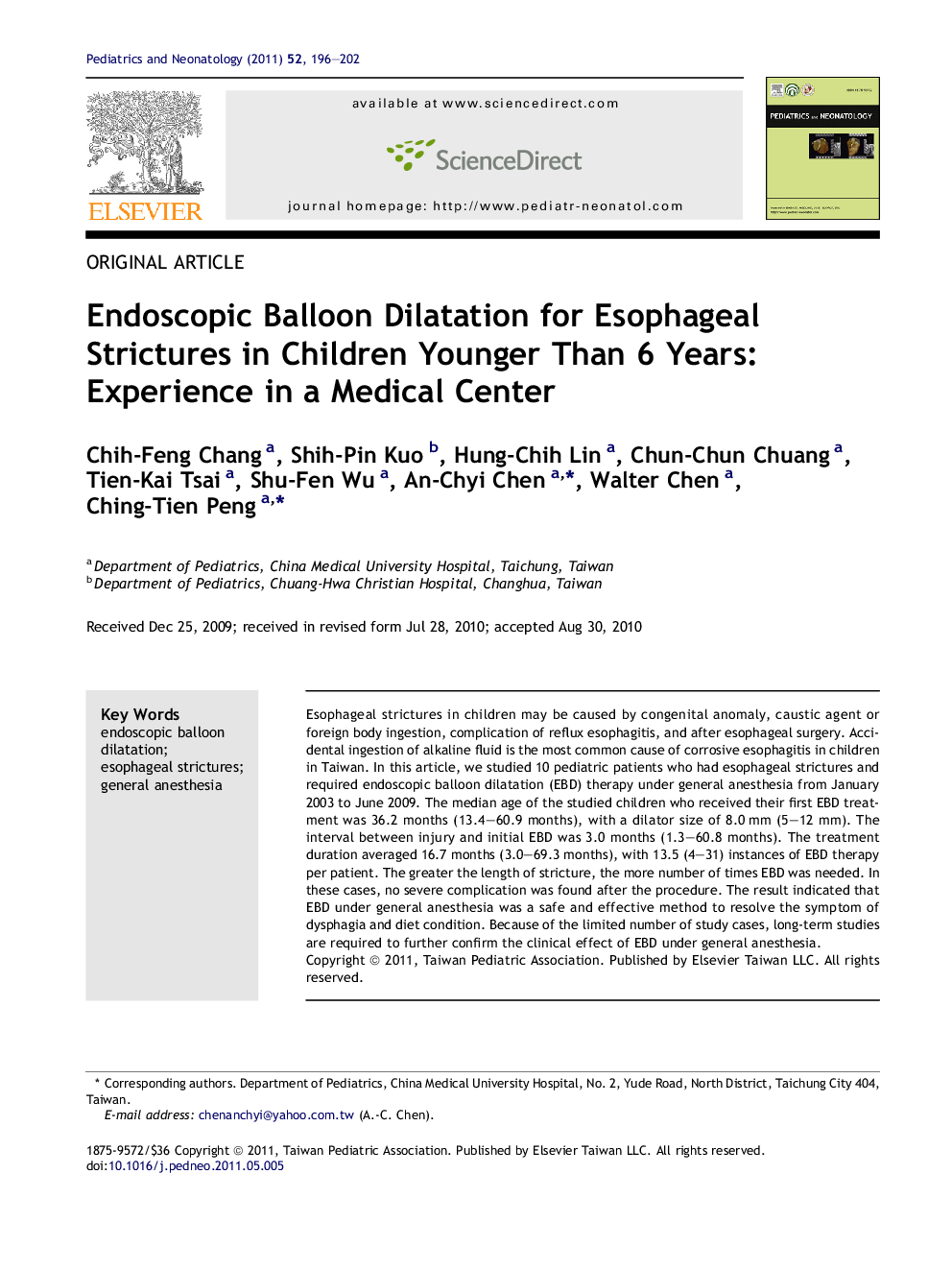| Article ID | Journal | Published Year | Pages | File Type |
|---|---|---|---|---|
| 4175349 | Pediatrics & Neonatology | 2011 | 7 Pages |
Esophageal strictures in children may be caused by congenital anomaly, caustic agent or foreign body ingestion, complication of reflux esophagitis, and after esophageal surgery. Accidental ingestion of alkaline fluid is the most common cause of corrosive esophagitis in children in Taiwan. In this article, we studied 10 pediatric patients who had esophageal strictures and required endoscopic balloon dilatation (EBD) therapy under general anesthesia from January 2003 to June 2009. The median age of the studied children who received their first EBD treatment was 36.2 months (13.4–60.9 months), with a dilator size of 8.0 mm (5–12 mm). The interval between injury and initial EBD was 3.0 months (1.3–60.8 months). The treatment duration averaged 16.7 months (3.0–69.3 months), with 13.5 (4–31) instances of EBD therapy per patient. The greater the length of stricture, the more number of times EBD was needed. In these cases, no severe complication was found after the procedure. The result indicated that EBD under general anesthesia was a safe and effective method to resolve the symptom of dysphagia and diet condition. Because of the limited number of study cases, long-term studies are required to further confirm the clinical effect of EBD under general anesthesia.
